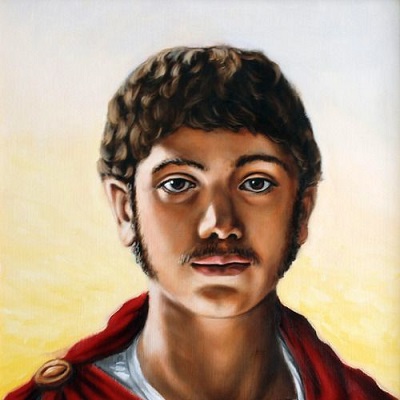Elagabalus- Biography
Page Contents
Elagabalus, sometimes known as Heliogabalus, ruled Rome from 218 to 222. Despite the fact that his reign was brief, he is known as one of the most bizarre and vulgar emperors of all time. Through his mother, he was linked to Rome’s imperial Severan dynasty. In Syria, his mother’s family likewise functioned as high priests of the sun deity, Baal or Elah-Gabal. Elagabalus was the heir of the high priesthood. Following the death of his cousin, the Roman Emperor Caracalla, his grandmother Julia Maesa conspired to depose the renegade praetorian prefect, Macrinus, and restore the monarchy to her family.
Taking advantage of Elagabalus’ likeness to Caracalla, she presented him as the fallen emperor’s illegitimate son. Her efforts were effective, and he ascended to the throne of the Roman Empire. His four-year reign has been characterized by insecurity and depravity. He had no desire to rule his country and showed no regard for any religion other than his own. Because he was so drunk with power, his grandmother’s suggestion to practice moderation fell on deaf ears. She grew bored of his antics and created a strategy to get rid of him. She effectively deposed him, just as she had successfully installed him on the throne. While she watched, he was stabbed to death by his soldiers and thrown into the Tiber River.
Elagabalus- Birth, Age, Ethnicity, Siblings, Education
- Elagabalus is thought to have been born in Emesa, Syria, in 204 AD. His father, Sextus Varius Marcellus, was a politician from a Syrian aristocracy, and his mother, Julia Soaemias Bassiana, was a relative of the Roman Emperor Caracalla. Varius Avitus Bassianus was his given name.
- Bassianus was a descendent of the Severan dynasty, which wielded considerable power over Rome in the late second and early third centuries. Julia Maesa, his grandmother, was the Roman Emperor Septimius Severus’s sister-in-law. His mother was descended from a line of high priests of the Syrian sun-god Baal, known as Elah-Gabal in Emesa. Using this tradition, he became the high priest of Elah-Gabal as well.
- Following the assassination of Roman Emperor Caracalla in 217 AD, his praetorian prefect Macrinus ascended to the throne. Macrinus wanted to banish Caracalla’s mother Julia Domna, but she opted to starve to death rather than leave the city.
- Julia Maesa, Julia Domna’s sister, vowed to avenge her relatives’ deaths. She devised a scheme to restore her family to the throne with the help of her daughter Julia Soaemis. She conspired and bribed individuals, as well as propagating the myth that Bassianus was Caracalla’s illegitimate son.
- Julia Maesa’s plan was successful when 14-year-old Elagabalus became Rome’s new emperor on 16 May 218 through a proclamation by centurion Publius Valerius Comazon, giving substance to the rumor that he was indeed Caracalla’s son. He took the name Marcus Aurelius Antoninus to give substance to the rumor that he was indeed Caracalla’s son.
- Macrinus dispatched troops to quash the revolt, but his troops joined the other party and assassinated their own commanding officers. Macrinus then petitioned the Senate, claiming Elagabalus was insane and a “False Antoninus.”
- When Rome’s Eastern Armies deserted Macrinus, he was unable to continue fighting. Macrinus and his son were defeated at the Battle of Antioch on June 8, 218 by Gannys, a eunuch who tutored Elagabalus. The father-son combination was captured and executed, allowing Julia Maesa’s grandson to ascend to the throne.
- Gannys was unable to witness Elagabalus’ ascension to the throne since his proximity to the new emperor appeared to be a threat to Julia Maesa and her daughter. As a result, they had him assassinated in order to preserve power in their hands. According to some historians, Gannys was assassinated by the new emperor, who was angered at the former for counseling him to be temperate.
Elagabalus- Relationship, Married Life
Elagabalus was married three times: once to Julia Cornelia Paula, once to Julia Aquila Severa, and once to Annia Aurelia Faustina. He also married an athlete named Zoticus in a public ceremony, according to certain records.
His grandmother persuaded him to divorce Aquilia Severa and marry Annia Faustina, a Marcus Aurelius descendent, for political reasons.
He was killed on March 11, 222, and is widely known as one of history’s worst dictators.
Reign
- Before traveling to Rome, Elagabalus spent the winter at Nicomedia with his mother and grandmother. Julia Maesa sent a painting of Elagabalus in a priestly robe to the Senate to be displayed over the statue of the goddess Victoria, so the senators could grow acclimated to having a priest as an emperor.
- This was a difficulty for the senators since every time they gave an offering to the goddess, they were also bowing to the emperor. As a result, even before arriving in Rome, the new emperor had antagonized some of his subjects.
- In the autumn of 219, Elagabalus arrived in Rome. He displayed complete contempt for Rome’s norms and traditions. Elagabalus elevated the Elah-Gabal to the status of Rome’s main deity, which meant that the sun god had to take priority over Jupiter.
- He insisted on Romans adopting his religion and built Elagabalium, a temple on Rome’s Palatine Hill. In a great chariot, the black relic representing the God Baal was transported from Syria to Rome.
- Elagabalus carried on with his duties as the deity’s high priest. Cows and sheep were slaughtered, and according to some sources, human sacrifices were also popular. As an offering, the sacrificial blood was blended with the best wine.
- It quickly became evident that the emperor was unqualified to rule. He delegated the day-to-day administration of his empire to his mother and grandmother, who were given the titles of Augusta. They were allowed to attend Senate sessions, making them the world’s most powerful women.
- He made a number of controversial moves, including demonetizing the Antoninus coin and decreasing the quality of the silver coin denarius from 58 percent to 46.5 percent. Those who had looked for stability following the turbulence of the past two reigns were quickly disappointed.
- Elagabalus’ reign was similarly riddled with scandals. He divorced his wife and married one of Rome’s sacred virgins, Aquilia Severa, from the ‘House of the Vestal Virgins.’ This was sacrilegious, for any virgin who broke her vows had to be buried alive.
- The emperor lived an extravagant lifestyle. He would only wear Chinese silk, swim in saffron-infused pools, and sleep on cushions stuffed with rabbit furs and partridge feathers. Elagabalus once had ships floating on wine in the ‘Circus Maximus’ to portray naval conflicts in “wine-dark waters” in a magnificent display of luxury.
- He took pleasure in throwing gifts to people during his banquets, not out of altruism, but just to watch them rush for gold money or food that he had thrown. His dinner guests are claimed to have practically suffocated under a never-ending shower of flower petals.
- According to several historians, Elagabalus was a transgender. He evidently preferred to be addressed as empress rather than the emperor. He also had both sexes as lovers. It is alleged that he sought out doctors who could turn him into a woman.
- Despite his three marriages, his most devoted lover was a chariot driver named Hierocles. The eccentric monarch would adorn himself with cosmetics, make-up, and wigs, and he preferred to be referred to as Hierocles’ mistress, wife, and queen.
- Elagabalus is regarded as one of history’s most filthy emperors, leading a life of sexual immorality. He once assembled all of his kingdom’s prostitutes and appeared in front of them disguised as a large-bosomed woman. Elagabalus then instructed them in sexual techniques and enticed them with the promise of large sums of money.
- He allowed the public to enter the imperial baths so he could observe people naked. His actions startled and enraged the citizens of Rome.
- He was reportedly told by a Syrian fate teller that he would die young and violently. The Emperor planned an elaborate suicide, including the construction of a bejeweled towering tower from which he would jump. As part of his suicide preparation, he also gathered daggers and stored poison.
- By 221, there were frequent rebellions in the Roman Army. Elagabalus’ grandmother requested that he adopt his 12-year-old cousin Alexander as his successor, realizing how unpopular he was. This was her scheme to eliminate Elagabalus and his mother.
Alexander gained popularity among the Romans, posing a challenge to the emperor. He attempted to assassinate him, but word got out, and a military insurrection erupted. - Elagabalus was stabbed to death by Roman troops in front of his grandmother Julia Maesa. His mother clung to her son and was assassinated as well. The bodies of the 18-year-old emperor and his mother were dragged through Rome’s streets before being dumped into the Tiber River.
Also Read, Kaylin Wiley, Averie Gilley, and Sophierosejm.





